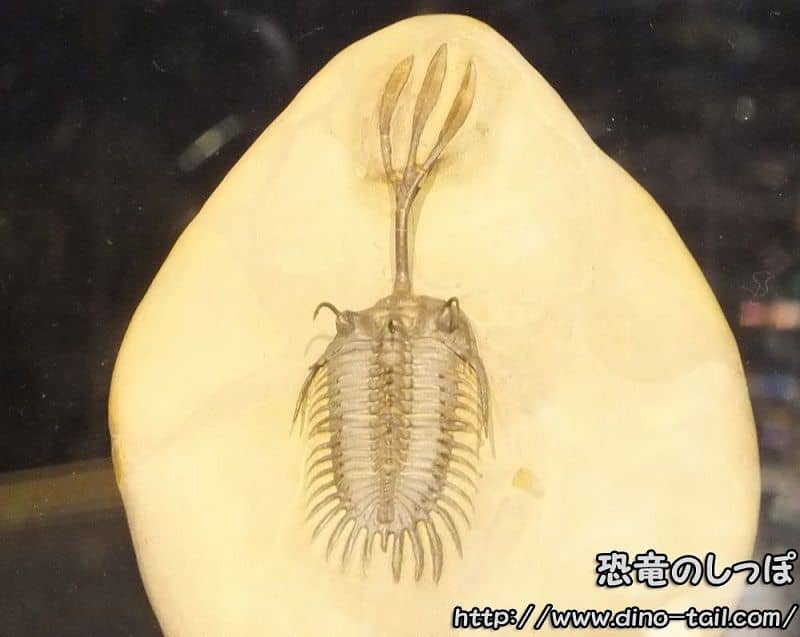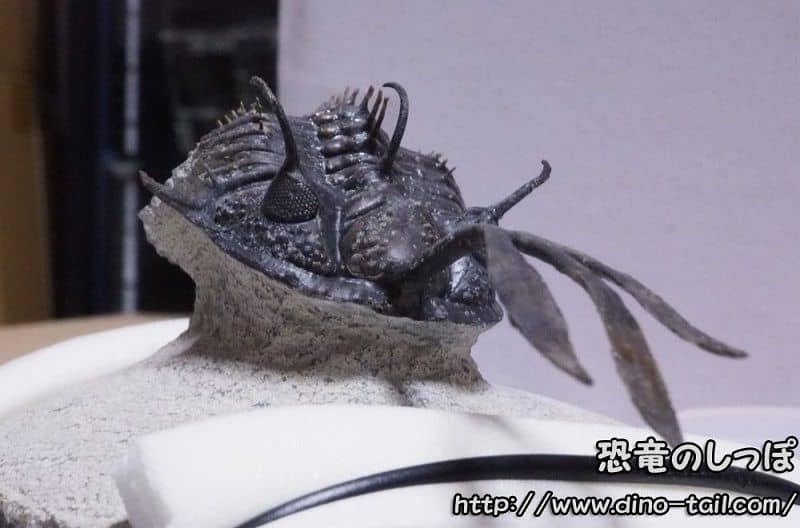About Walliserops (Trilobite)
| Scientific Name (Genus) | Walliserops |
| Meaning of Name |
Walliser's face
Named in honor of the German paleontologist O. H. Walliser - ops (face) [Greek] |
| Classification | Trilobita, Phacopida, Acastidae |
| Total Length | Approx. 2-10cm |
| Diet | Unknown |
| Period | Middle Devonian |
| Sub-classification / Species Name |
Walliserops trifurcatus
Walliserops hammii Walliserops lindoei Walliserops tridens |
| Year of Paper Publication | 2001 |
| Type Specimen Publication |
Les Trilobites Asteropyginae du Dévonien de l'Anti Atlas (Maroc).
Palaeontographica. Abteilung A (in French). Pierre Morzadec. 2001. |
Features
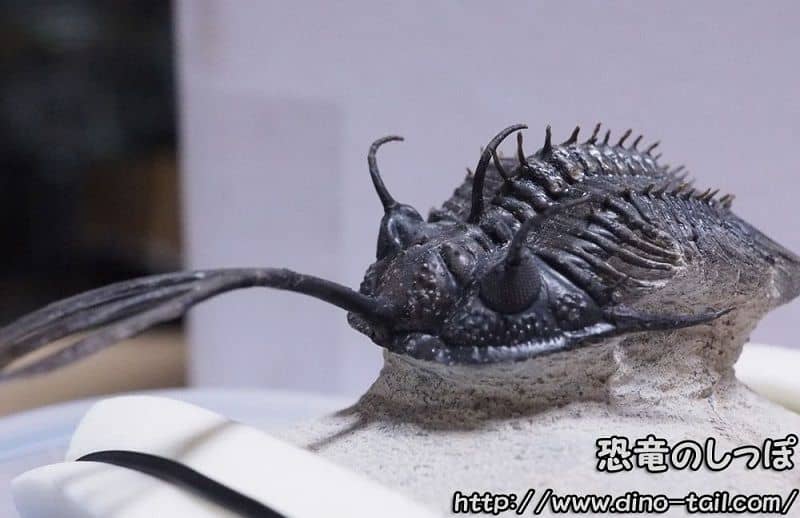
From Morocco
My Collection
The genus Walliserops is a trilobite characterized by a fork-like trident projection on its head.
There are several species, such as Walliserops trifurcatus (W. trifurcatus), commonly known as the "long fork," Walliserops tridens (W. tridens), known as the "short fork," and Walliserops hammii (W. hammii), distinguished by the length of the projection on their heads. All three of these species have been discovered in the Middle Devonian strata of southern Morocco.
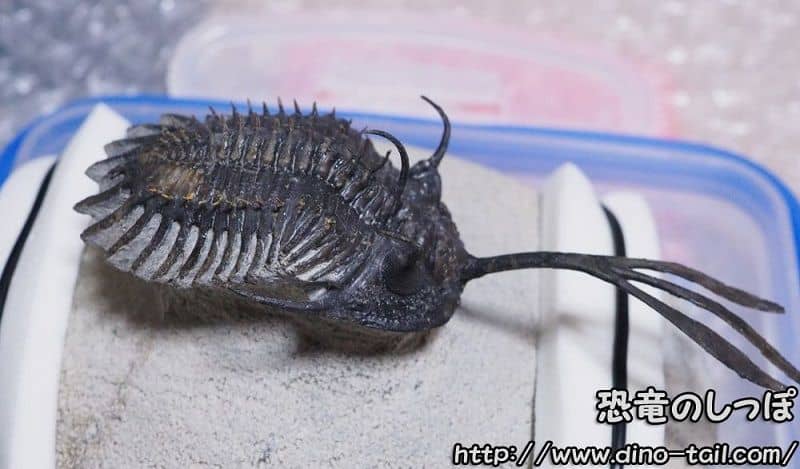
From Morocco
My Collection
Walliserops trifurcatus (W. trifurcatus), the "long fork" with its particularly long trident projection, is one of the most popular trilobites.
The Mystery of the Trident on the Head
The purpose of Walliserops's most peculiar trident has long been a great mystery in paleontology. However, recent research and the discovery of some amazing fossils have shed light on the answer.
Combat or Charm? A Commonality with Beetles
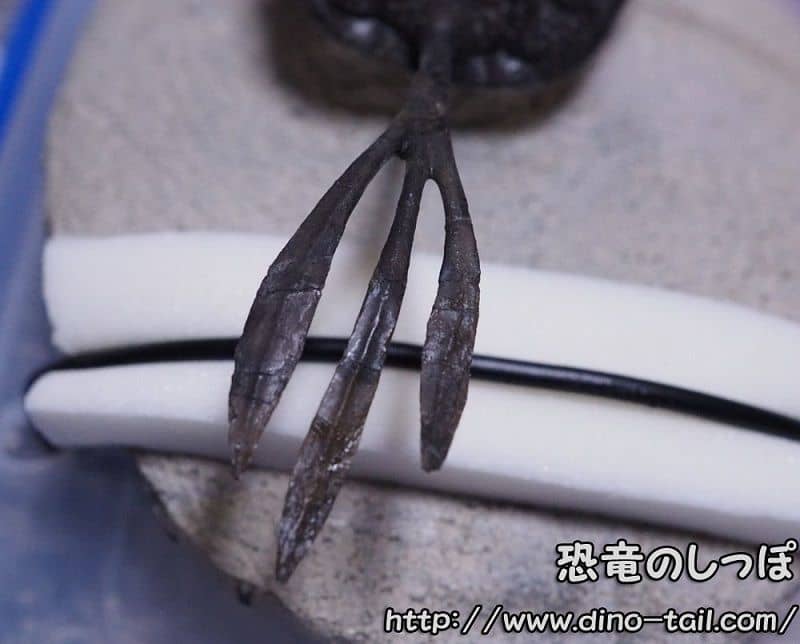
From Morocco
My Collection
Walliserops is characterized by its trident projection.
The most widely accepted theory today is that this trident was used for combat between males or for display to attract females (sexual display). This is very similar to the role of the horns of modern rhinoceros beetles and stag beetles.
It is possible that males used this trident to flip over or push away rivals when competing for mates or territory. The idea of "sexual dimorphism" is a hypothesis that scholars are currently debating.
Decisive Evidence? The "Asymmetrical" Fossil
An amazing fossil has been discovered that strongly supports this combat theory. It is a fossil of a Walliserops with an asymmetrical trident, with different shapes on the left and right sides . This is thought to be an individual that was broken in a fight or was born with a deformity.
If this trident were a tool for digging in the mud on the seabed, it would not function properly unless it were symmetrical. The existence of an asymmetrical individual suggests that this organ was not a practical tool, but rather a weapon used for combat or a display to compete for showiness.
Walliserops Stamp and Fossil Gallery
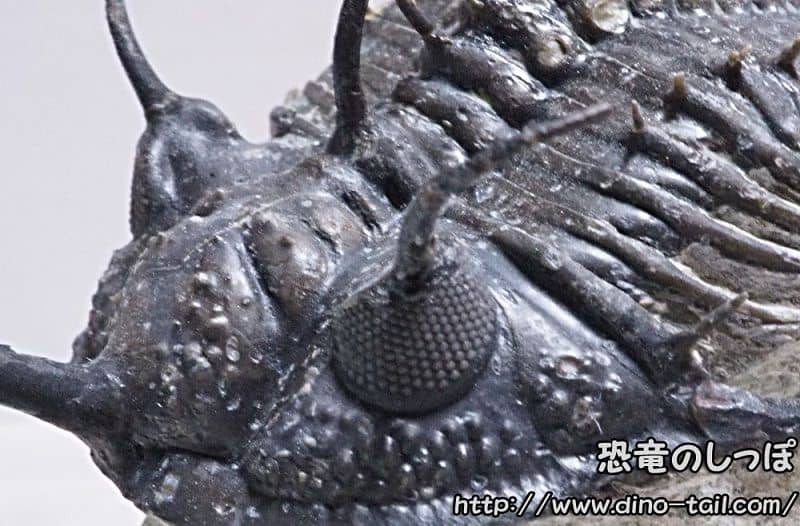
From Morocco
My Collection

